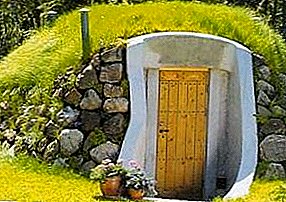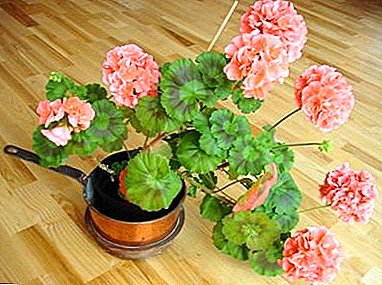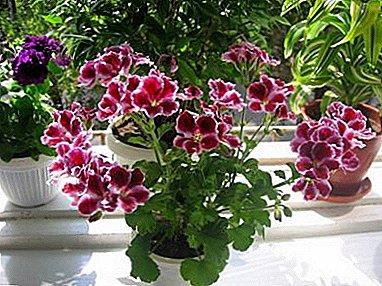 Cellar - a room for storage of fruits, vegetables, various products and stocks.
Cellar - a room for storage of fruits, vegetables, various products and stocks.
Due to the level of humidity and the supported temperature range, the cellar serves as a kind of "cooler" for products, and allows you to keep them fresh for a long time.
The cellar is often necessary in country houses and cottages. The large size of the room allows you to store fairly large reserves in volume, without worrying about their safety.
A canopy made of polycarbonate built with its own hands pleasantly pleases the eye.
Find out here how to make a bird feeder.
Shed own hands at the cottage: //rusfermer.net/postrojki/hozyajstvennye-postrojki/vspomogatelnye-sooruzheniya/stroim-saraj-dlya-dachi-svoimi-rukami-bystroi-i-nedorogo.html
Types of cellars
Before undertaking construction, it is necessary to determine the type of cellar that is suitable for construction on the site.
Cellars are:
- Underground.
- Subterranean.
- Ground.
 Underground (or earthen) cellar - the most popular. This is a room that is completely underground. It includes cellars in garage spaces, on sites and in homes.
Underground (or earthen) cellar - the most popular. This is a room that is completely underground. It includes cellars in garage spaces, on sites and in homes.
The cellar in the house is often called a subfield. Such underground premises are built in places where groundwater is at a great distance from the surface, or on elevated terrain.
Underground - this is a semi-submerged cellar. Such cellars are arranged where the groundwater level is close to the surface or where there are almost no elevated areas.
Ground - this is not quite a cellar, it is more like a non-buried type room for storing food. In such premises, humidity and low temperature (always artificially) must be maintained and they are mainly used in the agro-industrial and agricultural sectors.
Selection of a site for the construction of the cellar
If you want to make a cellar in a country house or in a garage, then the place is already selected. It remains only to find out the level of groundwater and the suitability of the site for the construction of the cellar.
The cellar in the house can not be built. Under the cellar you can equip the basement, you only need to determine what is the humidity in it and how cold it is.
If the basement meets these conditions - it can be safely used under the cellar. Temperatures above the limit are unacceptable, because vegetables will deteriorate very quickly, and at temperatures below the limit, vegetables can freeze, which also negatively affects their quality.
Under the cellar most suitable elevated terrain and dry soil. To determine the level of groundwater can be yourself. There are several methods for this:
- The groundwater level can be determined by the water level in the nearest wells.
- Drilling a small well deep into the groundwater level will also show.
- If there is a lot of greenery on the site, horsetail, sedge or plants that grow on swampy water soils grow, groundwater is close to the surface.
If you are not satisfied with such methods of determination, then you should call a geologist to explore the land.
It is better to determine the water levels in spring or autumn, as these are times of either melting snow or rain, that is, the water level at this time is the highest. This is done in order to determine not only their level, but also the level of flooding of the site during periods of rising water.
Find out on the site what kind of tile is needed for garden paths.
Raspberry, planting in the fall: //rusfermer.net/sad/yagodnyj-sad/posadka-yagod/aromatnaya-malina-vybor-sortov-i-osobennosti-vyrashhivaniya.html
The choice of materials for construction
The material for the construction of the cellar is selected based on its type.
Wooden log houses, brick or block structures are suitable for ground cellars. The choice of material for such a cellar is unlimited by the conditions, since the atmosphere inside will be maintained artificially.
 For semi-underground cellars suitable use of several types of materials.
For semi-underground cellars suitable use of several types of materials.
For example, wood, brick or foam blocks will be suitable for the ground part, and mainly brick or concrete for the recessed part.
For underground cellars there are a number of requirements that must comply with the materials. Wood is used very rarely, as ordinary bars and boards will rot and decompose at this moisture.
The timber must be ground, treated with special compounds and antiseptics. It is quite difficult and expensive, so other materials are used more often.
The most popular are brick and concrete. Brick is used burned (it is less susceptible to destruction), and concrete can be used as a block, and make monolithic walls. Less often iron sheets are used as material.
When using home basements as a cellar, you need to know some of the features. The subfloor is very convenient because you do not need to go anywhere for stocks.
It is enough to go down to the basement from the house. But you need to know that the use of subfloors ensures the appearance of mice, which will have to fight. Also, the cellar should be removed from the main living rooms, it is desirable that he was on the veranda, kitchen or in the corridor. Also the basement should be well ventilated.
The ventilation system is usually provided in the basement even during the construction of the house, but if it is not there, then you need to remember that the products and walls of the subfloor will be covered with mold.
Construction of the cellar
 For the construction of underground and semi-underground types of the cellar is required first to dig a pit. For the underground cellar the pit will be large and deep, since the cellar itself will be completely underground.
For the construction of underground and semi-underground types of the cellar is required first to dig a pit. For the underground cellar the pit will be large and deep, since the cellar itself will be completely underground.
It is important to remember that digging a pit should not be made according to the precise dimensions of the future premises, but much more, since you will need material for laying the floor and walls.
When the pit is dug, you can build a foundation. It is best to put a protective cushion of gravel, rubble, pieces of brick or stone and fill them with bitumen. This creates a layer that will protect the room from excessive moisture and water.
If the walls are concrete, then there are 2 types of construction - either from prefabricated concrete blocks, or the installation of monolithic concrete walls by pouring. In the first case, ready-made concrete blocks of the desired size are simply placed, reinforced and fixed along the perimeter of the walls. When creating a monolithic wall, the installation process is similar to laying a monolithic foundation of a building.
Wooden formwork is put in, either reinforced mesh or iron rods are placed inside to strengthen the wall, then concrete is poured. Such monolithic walls are the most stable and reliable option, as the cellar will be protected from moisture.
After installing the walls and floor, you can install the roof and sunroof, if it is a recessed room. Walls can be processed and plastered. You can put boxes or shelves.
Features planting pears in the fall on our website.
The specifics of pruning cherries in summer: //rusfermer.net/sad/plodoviy/uxod/obrezka-chereshni-letom-pervaya-posleduyushhaya-i-zavershayushhaya.html
Some important points of construction
When building a cellar, it is important not to forget about ventilation. To ventilate a room, it is enough to install one or two pipes that will go outside.
Pipes can be additionally equipped with electric fans, if the thrust is small or if the room is impressive in size.
For waterproofing walls, you need to use either grease or waterproofing material, such as roofing material.
Also, the cellar must be equipped with electricity, if required.
The cost of building a cellar
 The cost will depend on so many factors. First of all, it is the cost of selected materials, depending on the size of the cellar.
The cost will depend on so many factors. First of all, it is the cost of selected materials, depending on the size of the cellar.
Of course, a small compact cellar for a small family will cost less than a huge vegetable store.
It is necessary to take into account the cost of finishing and facing materials, waterproofing and ventilation system. It will be much cheaper to build a cellar yourself than to call a special team of builders.
Concrete cellars are a bit more expensive than brick ones. Concrete blocks will be cheaper than installing a monolithic concrete wall. Installation of electricity and equipment basement shelves and drawers also included in its price.


 A canopy made of polycarbonate built with its own hands pleasantly pleases the eye.
A canopy made of polycarbonate built with its own hands pleasantly pleases the eye. Find out on the site what kind of tile is needed for garden paths.
Find out on the site what kind of tile is needed for garden paths. Features planting pears in the fall on our website.
Features planting pears in the fall on our website.









